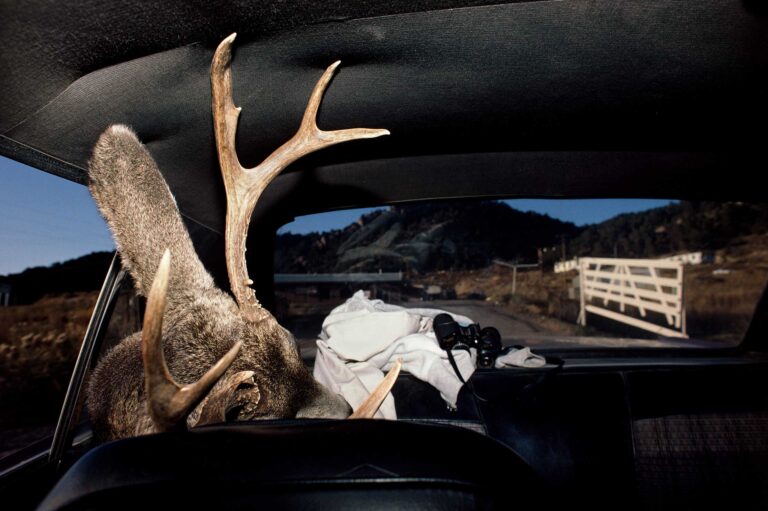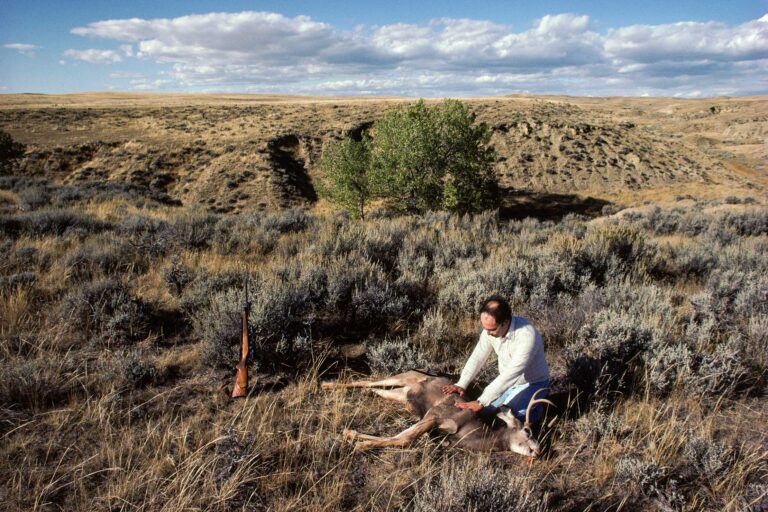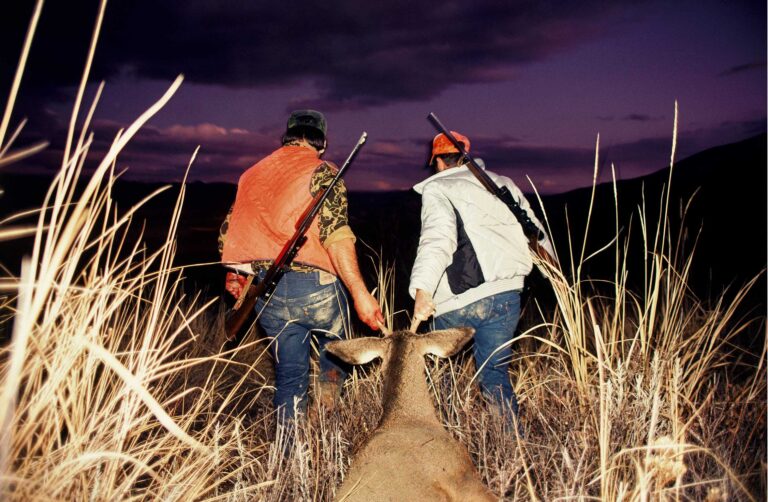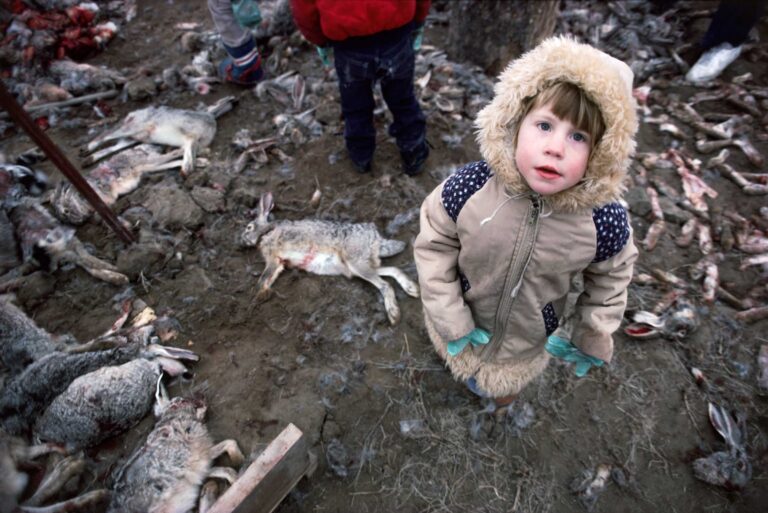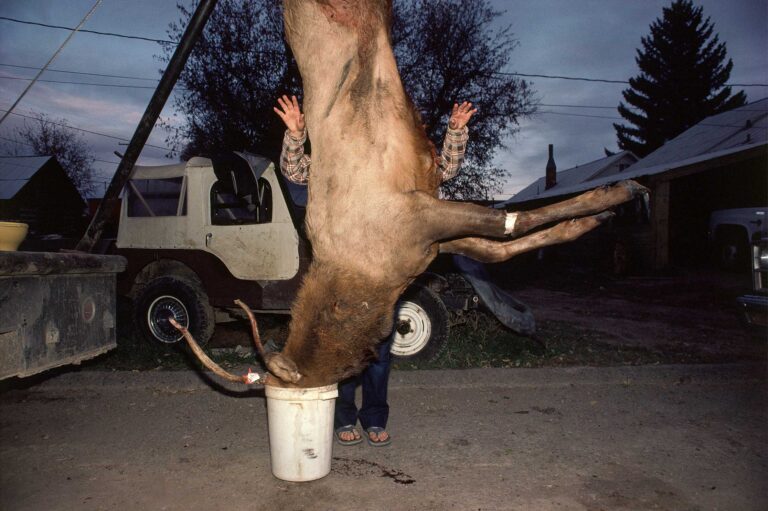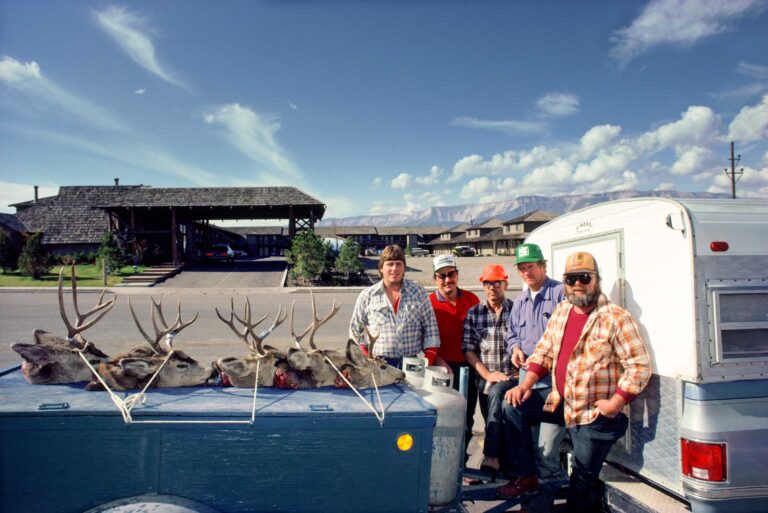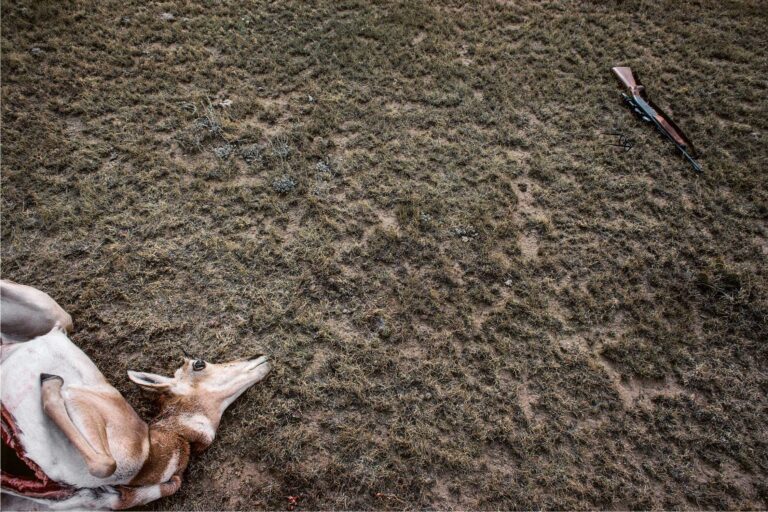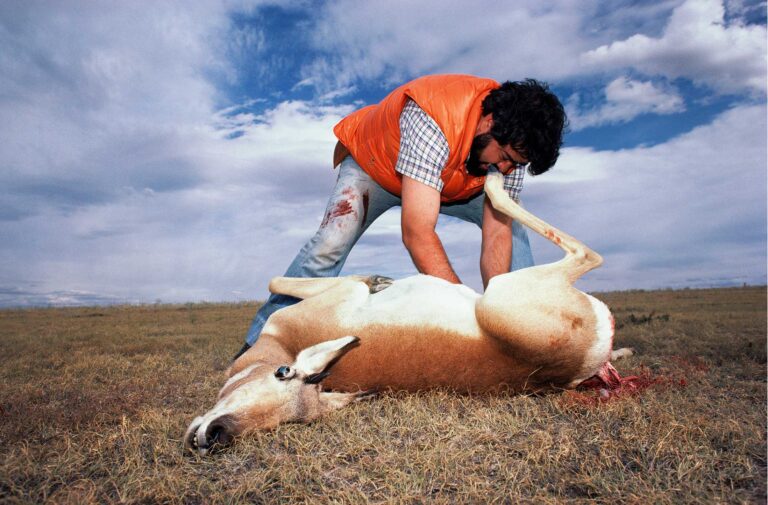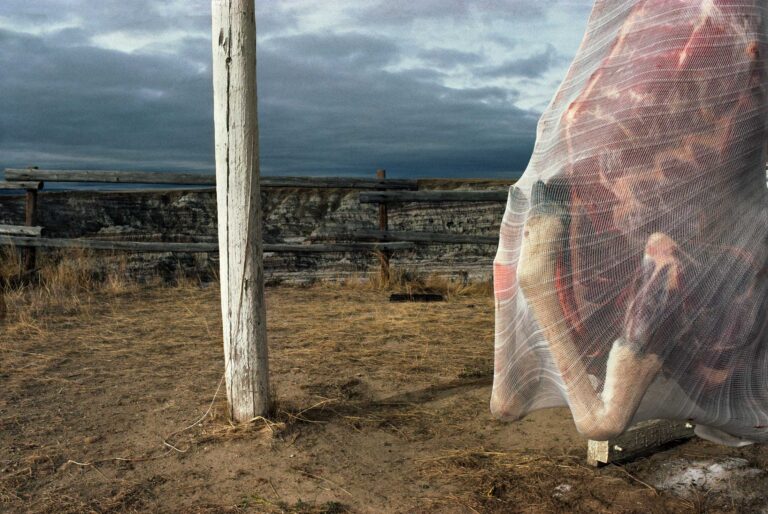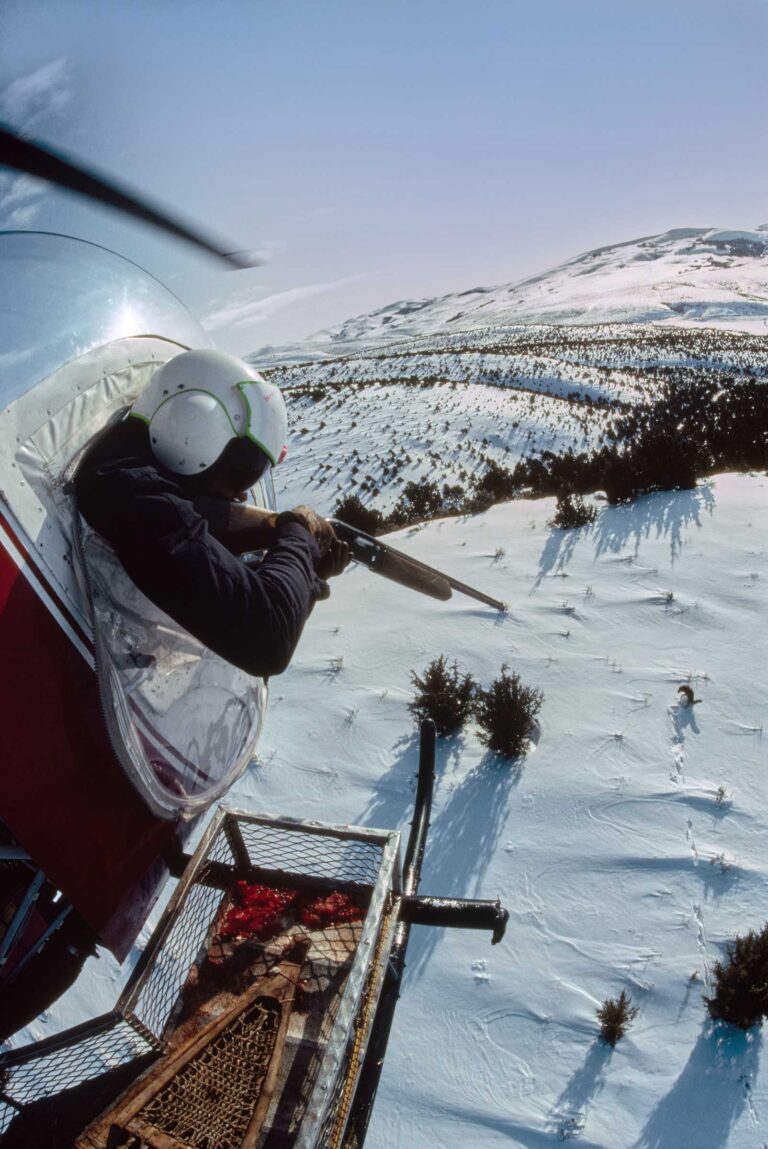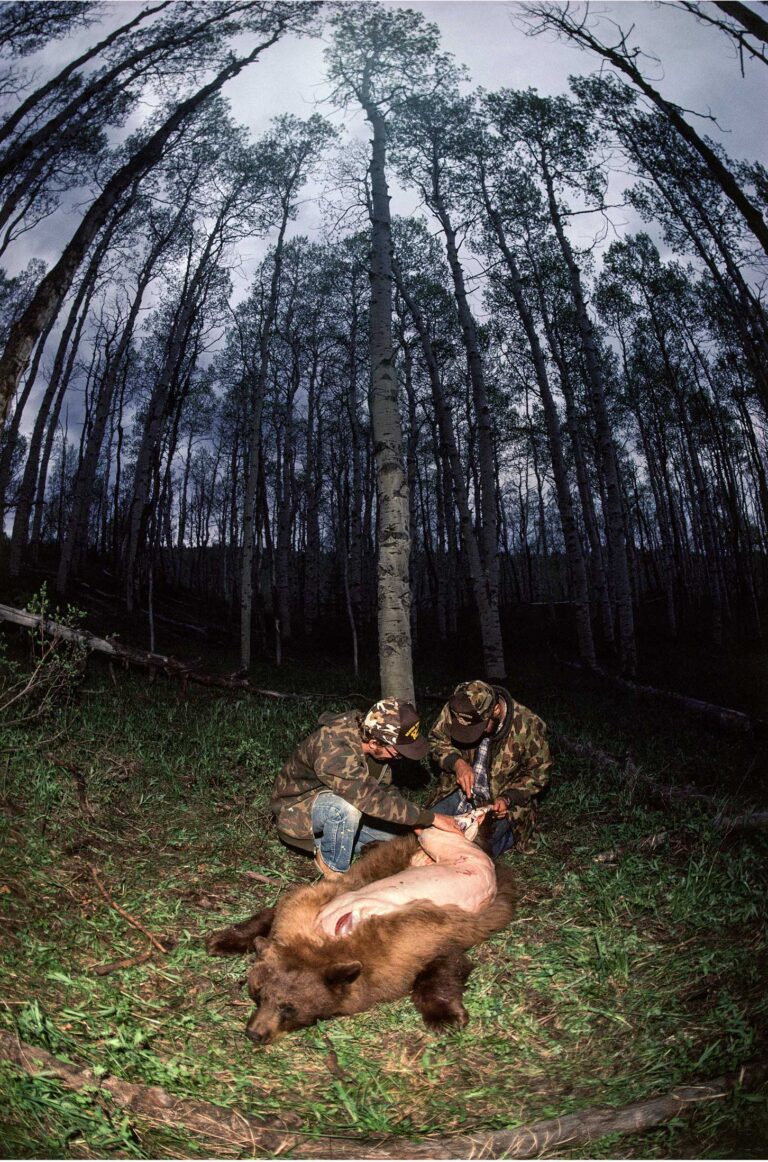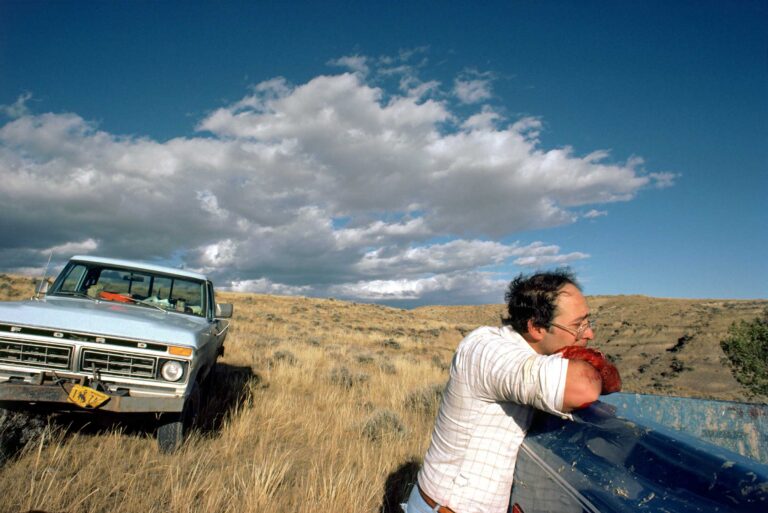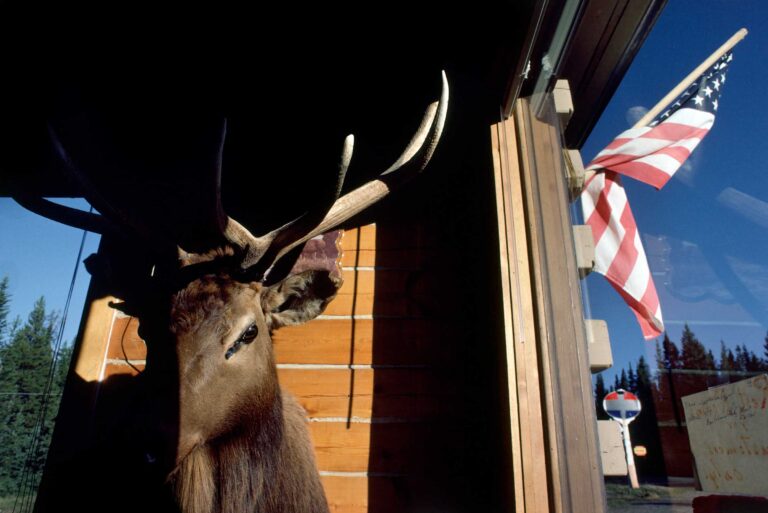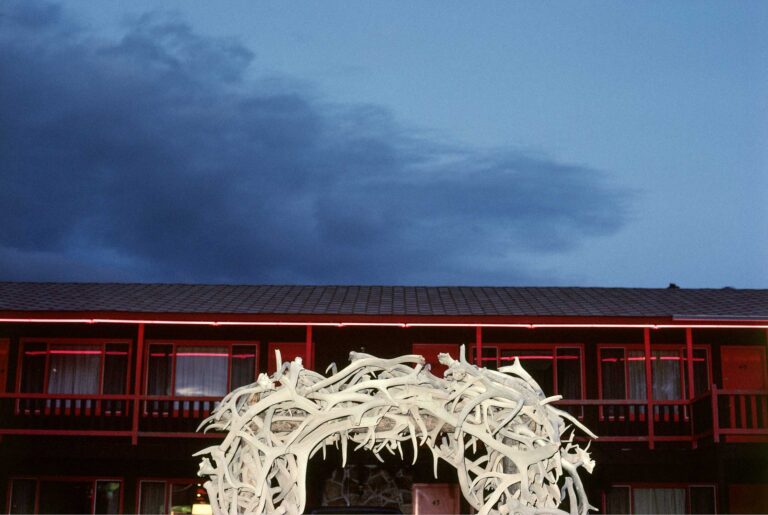These images are from one of James Balog’s earliest personal projects—as distinct from professional magazine assignments—and became the core of his first book, Wildlife Requiem (1984).
The series raises the question, James wrote in the book, of “whether the actions of the hunters can eradicate not only the wild animals themselves, but also the ‘anima’ [i.e., the primal spirit] of the wilderness.” The images include live-trapping of pronghorn antelope, bighorn sheep, deer, and elk; these efforts repopulated animals in areas where they had been exterminated, or much-diminished, during 19th century colonization of the West by non-Indigenous settlers.
Since childhood, James was fascinated by the world of wild animals, which seemed to exist in parallel with, but apart from, human concerns. Using his mother’s Brownie box camera, he took his first photographs of squirrels and rabbits at age eight or nine. Guided by adult role models who were hunters, he also began hunting and became fascinated by the way the pursuit provided physical proximity to wild animals—even if they would ultimately be dead. But he began to question the morality of killing animals for sport. At age 18, when he heard the heart-piercing wail of a dying rabbit, he abandoned hunting.
Decades passed before Balog realized how much synchrony there was between hunting and photography. Each involved an intense search for the subject of interest. Each involved staring at an animal with great concentration using an instrument of technology. And each activity culminated in pressing a trigger at a penultimate moment. But there was also a profound difference between the two: “If hunting negates life, photography affirms it,” he would later write.
